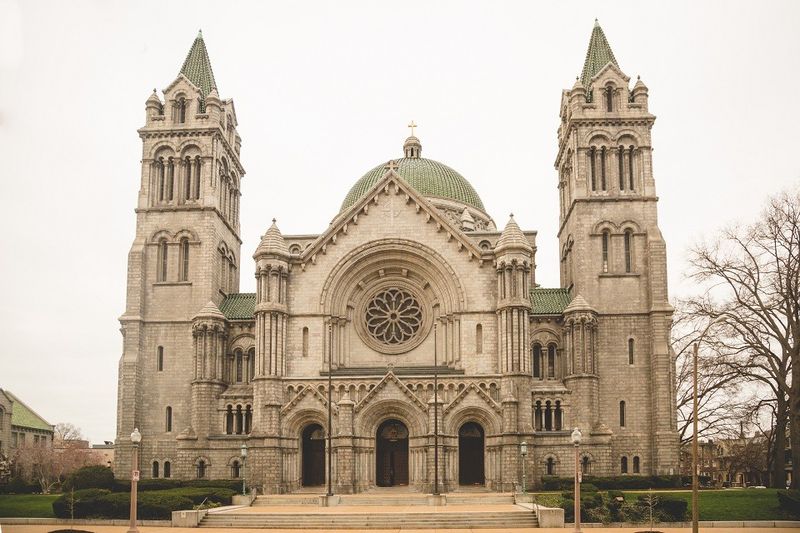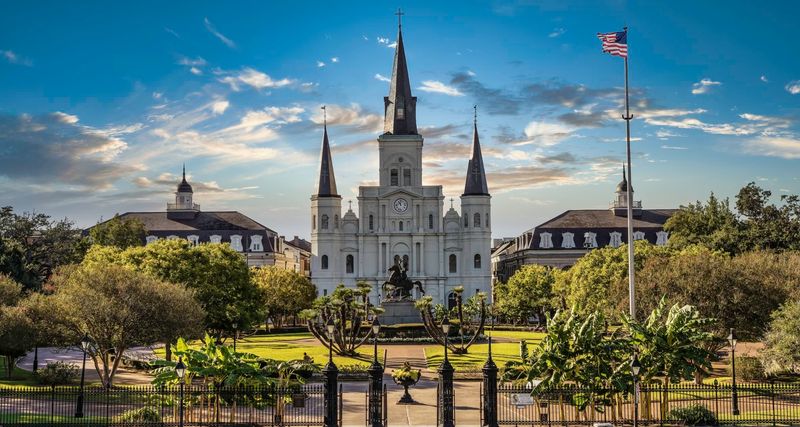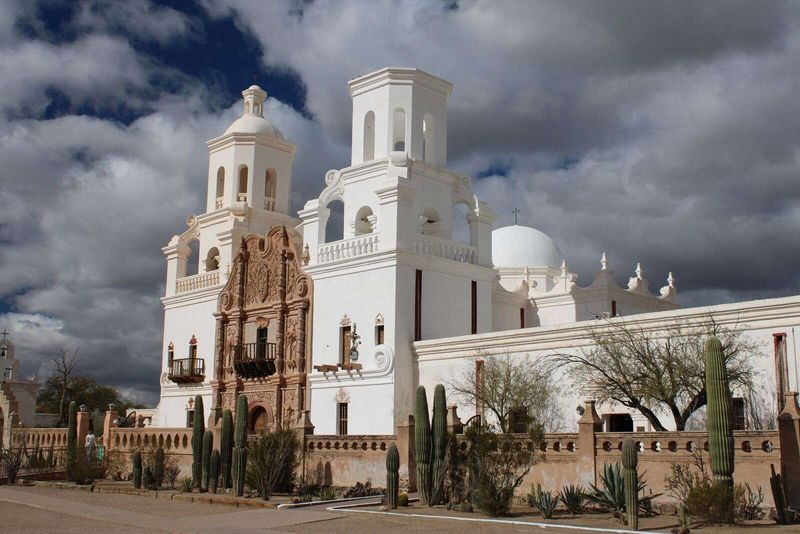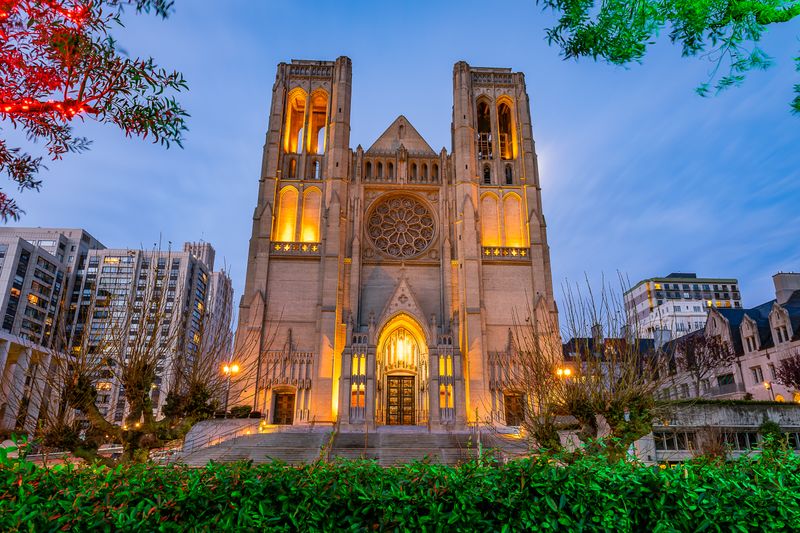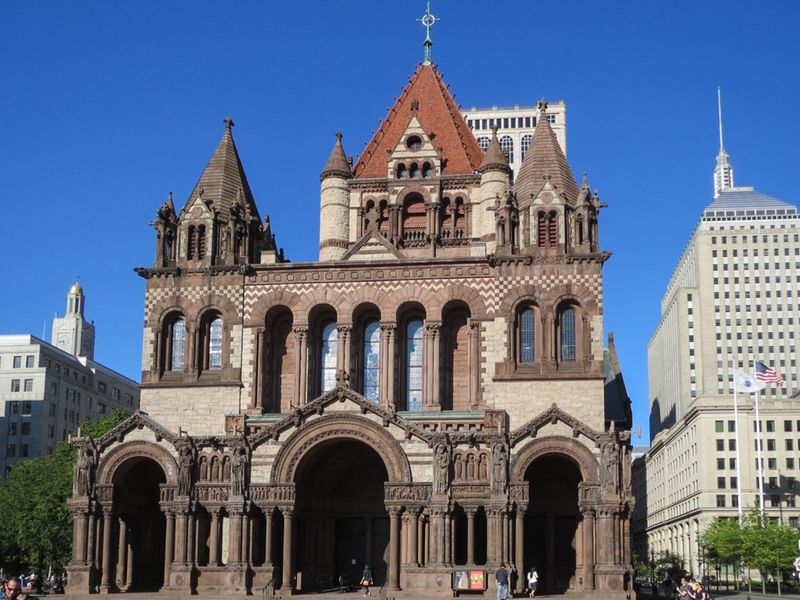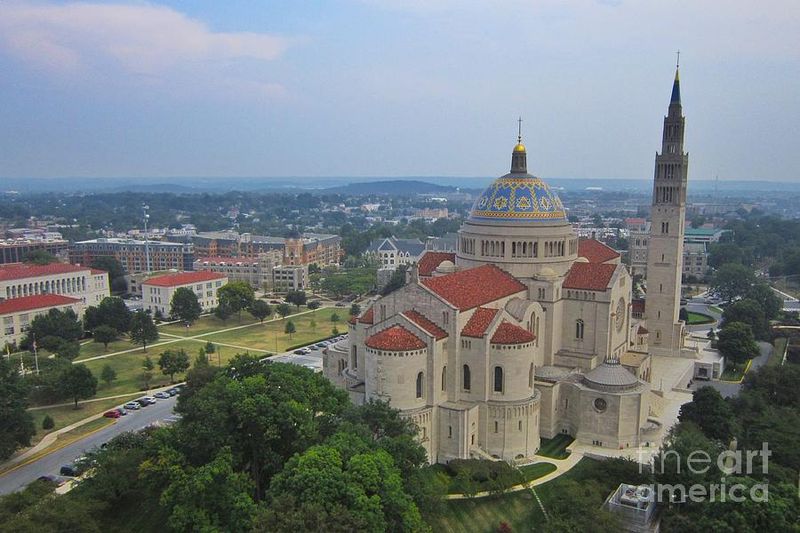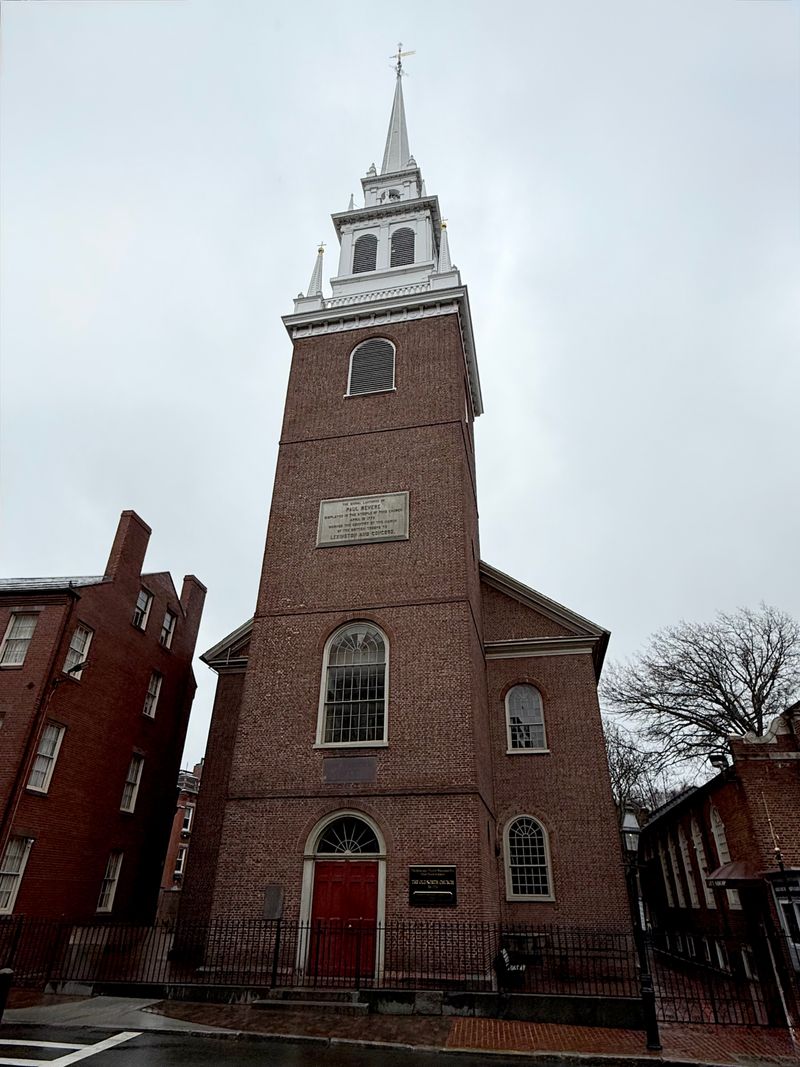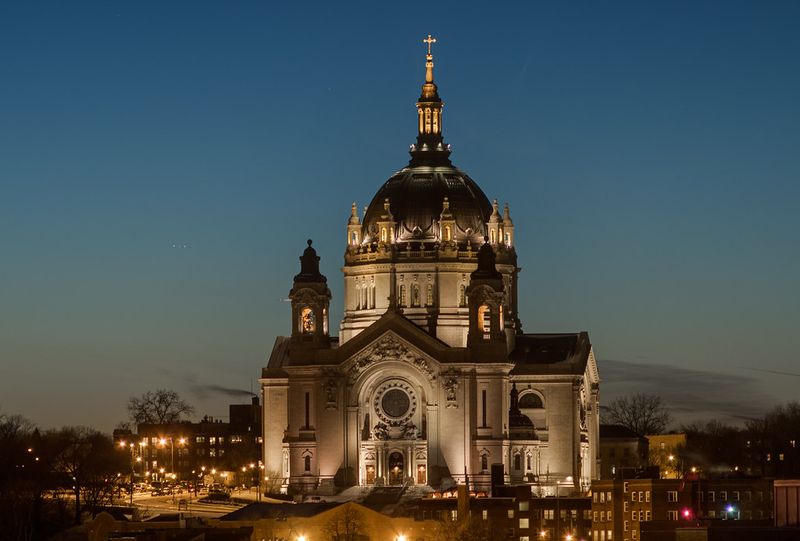America is home to some of the most stunning churches in the world, each with its own story and architectural beauty. From towering Gothic cathedrals to peaceful chapels nestled in nature, these sacred spaces offer visitors a chance to experience art, history, and tranquility all in one place. Whether you love stained glass, intricate mosaics, or breathtaking landscapes, these churches welcome everyone to step inside and marvel at their splendor.
1. Washington National Cathedral — Washington, D.C.
Standing tall in our nation’s capital, this Neo-Gothic marvel took 83 years to complete, finally finishing in 1990. Its most famous feature is the Space Window, which actually contains a real piece of moon rock brought back from the Apollo 11 mission.
Visitors can explore the cathedral’s many chapels, admire hundreds of stained glass windows, and even climb the tower for panoramic city views. The building hosts concerts, lectures, and services that welcome people from all backgrounds.
With its flying buttresses and gargoyles, the cathedral looks like it belongs in medieval Europe rather than modern America. The attention to detail in every carved stone makes this a must-see for anyone visiting Washington.
2. St. Patrick’s Cathedral — New York, NY
Right in the heart of Manhattan, architect James Renwick Jr. created this Neo-Gothic masterpiece that stands proudly among towering skyscrapers. The contrast between its ancient-looking spires and the glass buildings around it creates an unforgettable sight on Fifth Avenue.
After a recent restoration, the cathedral now shines brighter than ever, welcoming millions of visitors each year. Inside, you’ll find beautiful stained glass windows, ornate altars, and peaceful corners for quiet reflection.
The cathedral serves as the seat of the Archbishop of New York and hosts everything from daily masses to special ceremonies. Its central location makes it easy to visit while exploring the city’s other famous landmarks.
3. Cathedral Basilica of Saint Louis — St. Louis, MO
Step inside and prepare to have your breath taken away by one of the world’s largest mosaic collections. Every surface seems to shimmer with tiny colored tiles that tell biblical stories and create heavenly scenes above your head.
The cathedral even has its own Mosaic Museum in the lower level, where you can learn about the painstaking process of creating these masterpieces. Artists spent decades placing millions of individual pieces to complete this stunning work.
Unlike many European cathedrals that took centuries to build, this one was completed in a relatively short time. The result is a unified artistic vision that makes you feel like you’ve stepped into a jewel box of faith and art.
4. Cathedral Basilica of St. John the Baptist — Savannah, GA
Twin spires pierce the Savannah skyline, marking this Gothic Revival beauty as a cornerstone of the city’s historic district. The cathedral’s dramatic vertical lines draw your eyes heavenward, just as its builders intended centuries ago.
Inside, soaring arches and intricate details create an atmosphere of reverence and wonder. The stained glass windows cast colorful patterns across the stone floors, changing throughout the day as the sun moves.
Savannah’s historic charm extends to this sacred space, where visitors can attend services or simply sit quietly and appreciate the craftsmanship. The cathedral has survived fires and hurricanes, standing as a testament to the community’s dedication to preserving its spiritual and architectural heritage.
5. St. Louis Cathedral — New Orleans, LA
Flanking the famous Jackson Square, this iconic church is instantly recognizable as the symbol of New Orleans. The present structure was completed in 1794, though the site was elevated to cathedral rank even earlier, in 1793.
Its white facade and three distinctive spires have appeared in countless photographs, paintings, and films. Street performers and artists fill the square in front, creating a lively atmosphere that contrasts with the peaceful interior.
As the oldest continuously operating cathedral in the United States, it has witnessed hurricanes, wars, and the evolution of New Orleans culture. Visitors can attend mass, light a candle, or simply admire the blend of French and Spanish colonial architecture that makes this building unique.
6. Mission San Xavier del Bac — Tucson, AZ
Nicknamed the White Dove of the Desert, this 1797 Spanish Colonial mission rises from the Arizona landscape like a mirage. Its brilliant white walls and ornate baroque facade create a stunning contrast against the brown desert surroundings.
As a National Historic Landmark, the mission represents some of the finest Spanish colonial architecture in the United States. The interior features colorful frescoes and religious artwork that have been carefully preserved for over two centuries.
Still serving the Tohono O’odham community today, the mission remains an active place of worship. Visitors can explore the church, attend services, and learn about the complex history of Spanish missions in the American Southwest.
7. Thorncrown Chapel — Eureka Springs, AR
Imagine a chapel made almost entirely of glass and wood, with 425 windows bringing the Ozark forest inside. Architect E. Fay Jones created this Ozark Gothic masterpiece that seems to dissolve the boundary between sacred space and nature.
The chapel won the AIA National Honor Award in 1981 and later received the prestigious Twenty-Five Year Award. Its soaring vertical lines and delicate timber framework create a cathedral-like feeling despite its modest size.
Sunlight filters through the trees and windows, creating ever-changing patterns of light and shadow. Visitors often say they feel closer to God here than in any traditional church, surrounded by the beauty of creation itself.
8. Chapel of the Holy Cross — Sedona, AZ
Perched dramatically between red rock formations, this 1956 chapel looks like it grew naturally from the stone itself. Marguerite Brunswig Staude commissioned this architectural wonder, which is now listed on the National Register of Historic Places.
The chapel’s most striking feature is the massive cross embedded in its facade, visible for miles around. Inside, floor-to-ceiling windows frame the spectacular Sedona landscape, making the desert itself part of the worship experience.
Visitors climb a winding road to reach this spiritual retreat, where the silence and beauty inspire quiet contemplation. The combination of modern architecture and ancient geology creates a powerful reminder of both human creativity and natural majesty.
9. Grace Cathedral — San Francisco, CA
Crowning Nob Hill, this French Gothic-inspired cathedral offers both spiritual beauty and stunning city views. The building is famous for its twin labyrinths, which visitors can walk for meditation, and its replica of Ghiberti’s Gates of Paradise doors from Florence.
Inside, a major organ fills the space with magnificent music during concerts and services. The stained glass windows tell stories from the Bible and California history, creating a unique blend of sacred and regional identity.
Despite surviving the 1906 earthquake, the current structure wasn’t completed until 1964. The cathedral hosts interfaith events, art exhibitions, and yoga classes, making it a welcoming space for all seekers.
10. Trinity Church — Boston, MA
Henry Hobson Richardson’s landmark building essentially created an entire architectural style called Richardsonian Romanesque. With its massive stone tower and heavy arches, the church looks powerful and permanent, like a fortress of faith.
Architecture experts frequently rank Trinity among America’s most important buildings. Its innovative design influenced countless other structures across the country, making it more than just a beautiful church but also a piece of architectural history.
Located in Copley Square, the church reflects beautifully in the glass walls of the modern John Hancock Tower nearby. Inside, vibrant murals by John LaFarge and stained glass by various artists create a rich visual experience that rewards careful observation.
11. Basilica of the National Shrine of the Immaculate Conception — Washington, D.C.
Size matters when you’re the largest Catholic church in North America and among the ten largest churches in the entire world. This massive basilica combines Byzantine and Romanesque styles to create something uniquely American.
The building contains over 80 chapels and oratories, each dedicated to different aspects of Mary or representing various ethnic Catholic communities. You could spend hours exploring the different artistic styles and cultural expressions of faith found throughout.
The main dome towers overhead, decorated with stunning mosaics that rival anything found in Europe. Free guided tours help visitors understand the symbolism and artistry packed into every corner of this enormous sacred space.
12. Old North Church (Christ Church) — Boston, MA
Boston’s oldest standing church building dates back to 1723 and played a starring role in American history. This is where the famous two lanterns were hung to signal Paul Revere about British troop movements before the battles of Lexington and Concord.
The church’s tall white steeple is a beloved part of the Boston skyline. Inside, box pews and brass chandeliers transport visitors back to colonial times, offering a glimpse of how early Americans worshiped.
Beyond its revolutionary history, the church remains an active Episcopal congregation. Visitors can tour the building, climb to the steeple room where the lanterns were displayed, and learn about the brave individuals who risked everything for freedom.
13. Basilica of Saint Lawrence — Asheville, NC
Rafael Guastavino’s masterpiece showcases one of North America’s largest self-supporting elliptical tile domes. The Spanish architect brought Old World techniques to the Blue Ridge Mountains, creating something extraordinary.
The dome spans 58 by 82 feet without any internal supports, a remarkable engineering achievement. Guastavino’s signature tile work can be found throughout the building, from the vaulted ceilings to the decorative details.
Natural light filters through windows around the dome’s base, illuminating the warm terracotta tiles and creating a golden glow. The basilica’s Spanish Renaissance style stands out among Asheville’s eclectic architecture, offering visitors a taste of Mediterranean beauty in the American South.
14. Cathedral of Saint Paul — St. Paul, MN
Emmanuel Masqueray designed this Beaux-Arts cathedral to sit dramatically on Summit Hill, where its monumental dome dominates the St. Paul skyline. The classical plan and grand scale reflect the confidence and ambition of early 20th-century America.
The cathedral’s interior features marble columns, elaborate altars, and beautiful stained glass windows. The dome’s interior is decorated with paintings that tell the story of Christianity’s spread through the ages.
From the cathedral steps, visitors enjoy sweeping views of downtown St. Paul and the surrounding area. The building serves as both a spiritual center and an architectural landmark, hosting concerts, tours, and special events throughout the year.
15. Cathedral Basilica of the Assumption — Covington, KY
Just across the river from Cincinnati, this French Gothic-inspired basilica has welcomed thousands of visitors each year since earning minor basilica status in 1953. Its design echoes Notre-Dame de Paris, bringing a piece of French cathedral tradition to the American Midwest.
The building features stunning stained glass windows, including many created by the famous Bavarian Art Institute. The windows tell biblical stories in brilliant colors that transform the interior into a kaleidoscope of light.
Visitors can attend mass, take guided tours, or simply sit quietly and admire the soaring arches and intricate details. The cathedral represents the strong Catholic heritage of northern Kentucky and continues to serve as a vital community gathering place.



